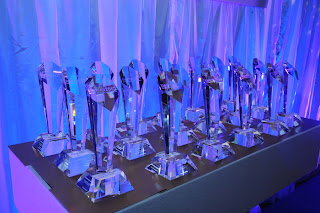Highlighted by their adoption in Apple Inc.’s iPhone 4, microelectromechanical system (MEMS) microphones are set to achieve a more than 50 percent increase in shipments in 2010 and a fourfold rise by 2014, according to the market research firm iSuppli, now part of IHS Inc. (NYSE: IHS). Global MEMS microphone shipments are set to expand to 695.6 million units this year, up 57.7 percent from 441 million in 2009, as presented in the attached figure. By 2014, shipments will rise to 1.7 billion units, four times the total for 2009.
MEMS microphones are tiny microphones that employ a pressure-sensitive diaphragm etched on a semiconductor using microelectromechanical technology. They are commonly employed in cell phones, headsets, notebook PCs and video cameras, replacing conventional electret condenser microphones (ECM).
“In a major milestone, Apple in 2010 employed MEMS microphones in the iPhone 4, the first time the company used the technology in the iPhone line,” said Jérémie Bouchaud, director and principal analyst, MEMS, for iSuppli. “Although Apple previously used MEMS microphones in the fifth-generation iPod nano released in 2009, the company exclusively had been employing ECM technology in the iPhone line. With this move, Apple in 2010 will become the world’s second-largest buyer of MEMS microphones, behind Samsung Electronics Co. Ltd. Apple was the sixth largest buyer in 2009.”
Although they are significantly more expensive than ECM devices, MEMS microphones provide a host of advantages in terms of size, scalability, temperature stability and sound quality.
The iPhone 4 employs two separate MEMS microphones for noise suppression, a technique that reduces background sounds to improve the clarity of voice communications. Although noise suppression has been available since 2006, the arrival of Motorola Inc.’s Droid as well as the iPhone 4 has caused the popularity of the technology — and of MEMS microphones — to soar. The majority of smart phones by 2014 will use two or more MEMS microphones.
The mobile handset market in 2010 is the largest consumer of MEMS microphones, ahead of notebook PCs. Headsets will form the third largest user of MEMS microphones, due to their use by Apple. By 2014, mobile handsets and notebook PCs will still be the largest application for MEMS microphones, followed by slate-type tablets, such as Apple’s iPad.
Since establishing the business in 2003, MEMS microphone pioneer Knowles Electronics has maintained market dominance, with the company set to account for more than 80 percent of shipments this year. The company has benefitted from its strong intellectual property portfolio. However, competition is rising, with three of the world’s five largest MEMS microphone suppliers now being Asian suppliers of conventional ECM — AAC Acoustic Technologies Holdings Inc., BSE Co. Ltd. and Hosiden Corp. — all of which recently added the product to their portfolio. These companies buy MEMS die from Infineon Technologies, package them and sell them, using their existing channels. Analog Devices Inc. is the only other pure MEMS company in the Top 5.
An International Trade Commission ruling in November 2010 should make it easier for newcomers to compete with Knowles. A commission judge ruled that Knowles’s silicon microphone patents were invalid.
MEMS & Sensors
iSuppli’s unique market research reports help deliver vital information on the status of the entire electronics value chain. iSuppli’s MEMS & Sensors market research provides up-to-date, insightful coverage of the consumer, automotive, and high-value markets for MEMS, or microelectromechanical sensors. For more details call +1.310.524.4007.
About iSuppli
iSuppli is the global leader in technology value chain research and advisory services. Services afforded by iSuppli range from electronic component research to device-specific application market forecasts, from teardown analysis to consumer electronics and from display device and systems research to automotive telematics, navigation and safety systems research. More information is available at www.isuppli.com
About IHS (www.ihs.com)
IHS (NYSE: IHS) is a leading source of information and insight in pivotal areas that shape today’s business landscape: energy, economics, geopolitical risk, sustainability and supply chain management. Businesses and governments around the globe rely on the comprehensive content, expert independent analysis and flexible delivery methods of IHS to make high-impact decisions and develop strategies with speed and confidence. IHS has been in business since 1959 and became a publicly traded company on the New York Stock Exchange in 2005. Headquartered in Englewood, Colorado, USA, IHS employs more than 4,400 people in more than 30 countries around the world.
IHS is a registered trademark of IHS Inc.


















